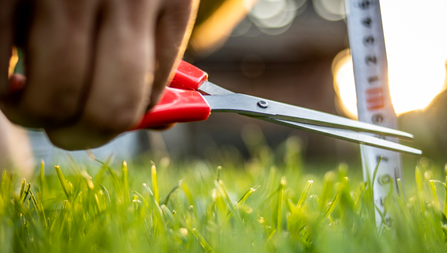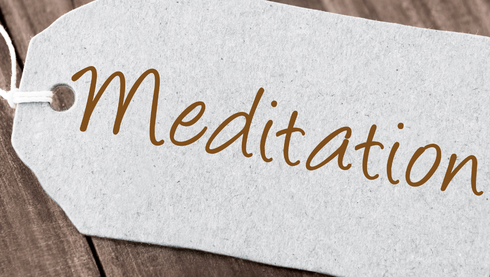|
Somedays, I write this blog at night instead of first thing in the morning. As I sit here now, for some reason it reminds of the Evening Star or the Evening Post. Not like Norman Rockwell but like some magazine or newspaper from a childhood memory. Specifically, back when I was a kid, the Washington Star newspaper had this separate fold-out tucked into the comics just for children. I can't remember the name of the little fold-out but it had puzzles, stories and history lessons about George Washington and the Supreme Court-stuff like that just for kids. Sorta like a Weekly Reader magazine but inserted into the comic section of the Sunday paper. You could count on it to be there every Sunday and then the Washington Star went out of business. I was devastated. I was heart broken. I was just about 6-years-old and already understood the importance of print newspapers long before their digital downfall. Then much to my delight, the Washington Post started carrying my little fold-out of Sunday bliss. My hobby; my ritual. Isn't it interesting how we are attracted to certain things as we grow up? Things that to other people would never matter but to you, your little world revolves around it and it brings you pure unadulterated joy. Even to the point, that 40 years later you are writing about it in a blog. The thought of its consistency and simplicity brings light to my heart and a smile to my face even now. It is so consistent and simple it is meditative. So is the the practice of writing about the memory itself. The original meditation is being 6-years-old with pencil in hand doing my "find a word" puzzles, and developing my love of polar bears and penguin by reading the blurbs. The meditation now comes from being present in this moment in time writing about the joy of my childhood ritual. So as I finish writing this blog entry tonight, I will remember to get up early and write tomorrow's blog first thing. After all, it will be Sunday morning and it will be time for my 6-year-old self to be unleashed. What simple task is meditative for you?
0 Comments
I recently learned that Body Fat (Adipose Tissue) is an endocrine organ and actually has more impact on the body than the thyroid gland. Therefore, too much adipose tissue (obesity) can lead to diabetes. Obesity increases the risk of developing Type 2 diabetes, high blood pressure, and high cholesterol as well as contributes to the risk for heart attacks and strokes. So what yoga therapy tools work great for the management of diabetes? I recommend these 3 yoga therapy tools: 1. After a few rounds of natural breathing, begin Ujjayi breathing. While your breathing, some food for thought-How Tapas (effort) is balanced with Santosha (contentment). Tapas can bring about change like improved health and lower blood sugar levels. While Santosha brings peace in the current circumstances. Always remember the importance listening to the doctor regarding nutrition and monitoring insulin levels. (5-10 minutes) 2. A short series of asanas to develop an exercise habit that can help with obesity, heart issues, high blood pressure, and metabolic syndrome. Also , these practices can help lead to improved mood potentially leading to lifestyle changes and improved quality of life. Always watch for any dizziness with the increased movement. (30 minutes) Sample Asanas: • 10 ½ Sun Salutations: The Sun Salutations can be completed as slow as necessary or even use a chair. • Warrior I: Warrior I (lower body) with goal post arms. Transition to straight legs and Warrior I (straight) arms. Repeat 5 times per side with an extended hold at the end (3 counts/breaths). You can also do this posture in a chair if needed. • Seated Spinal Twist: Depending on our flexibility, the opposite leg can be bent or straight as well as accomplished with deer legs or from easy pose. • Seated Forward Fold: Finally, transition to a seated forward fold to begin the activation of the parasympathetic nervous system. 3. Savasana: Practice a relaxation pose of choice and begin breathing with an extended exhale. You can also use a guided visualization of your peaceful place to continue the activation of the parasympathetic nervous system. (10 minutes) Yoga can be incorporated into your daily life and have positive impacts on glycemic control. Studies suggest that yoga has a direct impact on psychoneuro-endocrine and immune mechanisms as well as contributes to parasympathetic activation and anti-stress mechanisms. This all leads to improvement in overall metabolic and psychological profiles, increases in insulin sensitivity, and improvements in glucose tolerance and lipid metabolism. In addition to the practices listed above, yoga practices utilized in the management of diabetes often include cleansing exercises, and the use of bandhas, meditation, relaxation, chanting, Yoga Nidra, or mudras. These practices can reduce blood glucose levels as well as contribute to the management of co-morbidities. What yoga practices will you incorporate in your fight against diabetes? Raveendran, A. V., Deshpandae, A., & Joshi, S. R. (2018). Therapeutic Role of Yoga in Type 2 Diabetes. Endocrinology and metabolism (Seoul, Korea), 33(3), 307–317. https://doi.org/10.3803/EnM.2018.33.3.307 As yoga instructors or yoga therapists, we often use Yoga Nidra or meditation “scripts”. And just like you, I too find some of the wording cumbersome and I stumble quite often over the language. There are certain scripts that resonant with me like those created by iRest experts but even those don’t roll off my tongue naturally. I like language that is clear and concise. Language that is easy to understand and that anyone participating in my classes can relate to and gain benefit. I steer away from loaded language and use more Western terminology in my group meditation and Yoga Nidra classes since some students are not coming to class for spiritual or philosophical reasons-they just might be trying to sleep better at night. A good way to find out how you sound reading one of these pre-written scripts is to record yourself. It will help you develop an authentic voice as a yoga instructor and/or therapist. You’ll instantly pick up on those parts of the language that sound “fake”. You know those parts..."like there is no way in the world I would normally talk like that." So what do I do? I change it up! Some Common Script Language and How I Change It
What are some ways you, as a yoga instructor, change language to be more authentic? As a student, what language have you heard an instructor use that sounded odd? According to Donna Farhi, “Countertransference refers to the way a student, client or patient may evoke repressed feelings on the part of the teacher, therapist or doctor”. By being aware of the countertransference, it enables the yoga therapist to create and maintain better boundaries as well as develop tools to contain feelings so not to destabilize the client-therapist relationship. Trust me-this is easier said than done. I am always working on this aspect of the client/therapist relationship. I openly admit, I struggle with perfectionism making the most prominent feeling a client can evoke in me--accountability. In my professional and personal life, I am always prepared and hold myself to a high standard especially if I commit to do something for another person. I equate this trait to respect for and towards others. So, when a client lacks what I would call accountability or respect, it makes me soooo angry. I’m also greatly disappointed in and saddened by someone I thought was reliable and trustworthy as if I really know that client on a personal level. I have to remind myself-I’m the yoga therapist and I don’t know anything more about the client than what he/she/they tell me. The client/therapist relationship is not personal. So, I endeavor to remain professional at all times and try diligently not put my moral/value/ethical system on others or cling to expectations of others that I have no control over. Like I said…easier said than done!! You don’t have to be a yoga therapist to know how hard this is—we experience this same clinging to expectations in everyday life. Do you hold on a little too tightly to certain aspects of yourself, your life or others? Is it possible to let go of expectations? How Do I Work on Letting Go Expectations? I go back to the Yoga Sutras and, in particular, the last Yama …Aparigraha (non-attachment). This enables me to let go of my expectations of others since it only creates suffering for me. Here’s are some ways to cultivate Aparigraha:
What tools can you put in place to steady yourself when attachment and clinging raise their ugly head? Farhi, D. (2006). Teaching Yoga: Exploring the Teacher-Student Relationship. Rodmell Press. Swami Satchidananda was once asked by a student, “There are times when I feel very deep loneliness that no friend, family member or lover can seem to satisfy. Do you ever get lonely like that?” Satchidananda replied, “If you depend on anything or anybody outside you to be a companion, it is impossible to have that companion always with you. Even if another person wants to be with you always, he or she cannot. We come alone, and we go alone. Don’t depend on outside company. Even as you are coming and going, there is always another there—your own spirit, your own Self or the God within you.” When we rely on things, people, or experiences outside of ourselves to make us happy, we are seting ourselves up for failure. True equanimity comes from being independent of the comings and goings of the outside world. The minute we cling to something or someone we create little mind fluctuations that cause suffering. The key to gaining control over those fluctuations is to understand what lies underneath those thoughts. Our thoughts may be pure, positive, and virtuous, and move us toward enlightenment. Or, as is the case for most of us mere mortals, our thoughts can impede our path toward enlightenment by creating a mental field of suffering caused by the Kleshas (obstacles or afflictions of the mind). So What Are The Kleshas? The five Kleshas are:
Some of the Kleshas afflict us on a daily basis at a subtle level and others can be overwhelming and cause great suffering. The Kleshas stop us from fully enjoying life, from being truly present in the now, and from having a sense of freedom. Unlike pain—an uncomfortable physical, mental, or emotional experience—suffering is the state of being caught up in your situation and identifying with it as an aspect of your being. Therefore, pain is inevitable, but suffering is optional. All of human suffering can be attributed to one of the five Kleshas. All causes of suffering are contained within the first Klesha (Avidya). When you remember your true identity as pure spirit (and not as the physical body):
How Do We Overcome the Kleshas? This is where meditation comes in. In meditation, the mind can be fixed on one thought. That concentration on one thought or one point literally transforms the mind by allowing it to flow undisturbed from thought to thought. Once the mechanism that produces the detrimental, harmful or damaging activities of the mind is eliminated, your thoughts are no longer afflicted. The underlying obstacles, the Kleshas, are removed and we realize our true nature. To transcend the first Klesha and, thus, the remaining four, the Yoga Sutras give this guidance. Sutra 2.10 states, “In their subtle form, these obstacles can be destroyed by resolving them back into their original cause.” This means if we eradicate the first Klesha (Avidya) we can become self-realized/liberated. Through yoga the Kleshas become less and less active until they reach the subtle form. However, remember even the subtle form can be triggered back to the active state-think about all the fallen gurus in recent memory whose Kleshas came back roaring. Sutra 2.11 states, “In the active state, they can be destroyed by meditation.” Think of it this way-Sutra 2.10 is for the already “advanced” meditating yogi and Sutra 2.11 is for the rest of us-the yogis that are embarking on the path to liberation. Meditation is moving away from a life of suffering and is the key that unlocks this prison by returning you to the state of knowledge of who you are. Everything in the physical world is impermanent and ever changing. Friends are not permanent. Our physical body isn’t permanent. A job isn’t permanent. Money isn’t permanent…and the list goes on. What is permanent…your True Self.
Swami Satchidananda. The Golden Present. 1987. Integral Yoga Publications. In the recent past, I had an extremely difficult supervisor. I couldn't concentrate at work due to the on-going conflict with my supervisor. My stomach stayed in knots. No amount of asana (yoga poses) or pranayama (yogic breathing techniques) ever relieved the stress. My self-worth and confidence suffered. So I Turned Up The Volume Of My Meditation Practice Through meditation, I was able to think more clearly, and be less reactive or impulsive when dealing with him. In other words, I didn't quit my job due to my emotions and make myself and my family homeless. I was able to use reason instead of just my gut response. Meditation enabled me to keep these aspects of my Self in sync-my head and my heart. It empowered me to think clearly, in a non-reactive (meaning destructive) manner, and it motivated me to find a new job by decreasing my negativity and increasing the innate confidence I already had in my abilities. Obviously, looking for a new job was a reactive response to the on-going situation with my supervisor. However, it is a healthy and productive reactive response as opposed to just quitting my job. The on-going conflict increased my passion (my heart, my gut) to create a strategy (my head) necessary to illicit change in my employment and in my life. By cultivating a balance between the head and the heart, I was able to develop a healthy response to a life situation. What Is This Balance Called? Equanimity There are many definitions of Equanimity. They usually say something like "mental calmness", "composure", or "even temper in difficult situations." I personally define is as "not loses my shit." With equanimity, we are able to engage with the world around us and see the changing patterns. Equanimity enables us to recognize that difficult thoughts, worries and feelings will change and pass. Think about the world around us in this past year-COVID, the presidential election, George Floyd, and list goes on. The news cycle was contained with events, people and actions that caused many of us anxiety, worry, fear, and anger. Cultivating equanimity is a resource that can help us navigate all this unpredictability of the world without losing our balance. How Can We Cultivate Equanimity? Meditation!! Bring our heart and head in sync with each other. Create a synergy between the rational and the emotional selfs. Meditation lets us dive deeper. It lets us explore how all the parts of our SELF are intertwined. It reduces those fluctuations of mind chatter (yogas chitta vritti nirodha). It reduces attachments to unhelpful emotions...so that you can have an even temper in difficult situations. Meditation gives us the tools to develop stillness...quieting the ruminations, the what ifs, the could have beens, the attachments to identity or self-worth and the attachment to things, people and outcomes you can't change. An Equanimity Practice
Take a few moments and when you are ready journal about your experience and throughout the day bring some awareness to meeting everything (good and bad) anchored and balanced like a mountain. Compassion=Concern for Others' Suffering Empathy=Feel What the Other Person is Experiencing Assertive Communication=Speaking Your Truth Through compassion, empathy, and assertive communication, you can cultivate loving-kindness. What is loving-kindness? You may have heard of Metta Meditations. Metta is Sanskrit for "loving-kindness". Loving-Kindness is friendliness, amity, and good-will. It is an active interest in others. Compassion for others infuses assertive communication with warmth and caring while empathy helps to understand an individual’s inner workings. These skills lead to interacting with loving-kindness regardless of your personal suffering and leads to wishing the other person wellness. This amazing combination (compassion, empathy and assertive communication) dissipates the feelings of ill-will that our brain can and does create. Which leads me to my husband. He is a fixer. A fixer of fixers. The Chief Fixer. A man who thinks he can fix any thing, any one, and any situation. And this is why I married him...I don't mean because he can fix my car or the heat pump or just about anything mechanical. I mean he is helper. He has this ginormous heart and goes out of his way to FIX all the wrongs of the world. He spends hours helping a local school (because the dads don't volunteer-we don't have any kids). He spends weekends rehabbing old cemeteries (the families have forgotten them-we don't know anyone buried in them). He just is a nice guy who wants to take care of everyone. He is the guy who will give you the shirt off his back-literally!! So...sometimes people manipulate that kindness. They know if they fain distress, he will come to the rescue, take over and fix everything. Those people don't have to be accountable for their own behavior...because they are users. We all know the type! Then... I get frustrated with the hubs because he takes on stress and responsibilities that are not his to take on. The very trait I love him for, pisses me off. ...which leads us to arguments. We have all been there, right? Here's what I try to do...it's hard and I don't always succeed but you might find these steps helpful for cultivating loving-kindness and communicating in a more healthy and helpful way: 1. Check in. For example:
3. Become aware of triggers for ill-will. Don't focus on potential harm to yourself or your family and don't exaggerate the events occurring. These steps enable me to communicate more openly, be less reactive, and be more supportive of my husband and his really big heart. How is this a yoga practice? Glad you asked! In the Yoga Sutras, the first two limbs of the Eightfold Path are the yama-s and niyama-s. Each contains 5 principles (10 in total) to follow on your path to enlightenment. Three of these are: Ahimsa=Non-harming.
What other yama-s and niyama-s can you think of? Try These Practices to Cultivate Loving-Kindness and Effective Communication:
Rosenberg, S. (Director). (1967). Cool Hand Luke [Film]. Jalem Productions. Hanson, R. (2009). Buddha’s Brain: The Practical Neuroscience of Happiness, Love and Wisdom. Oakland, CA: New Harbinger Publications, Inc. |
Kelley GallopI AM Boundless Bliss Yoga. Just me. I'm a one-lady band. I'm a yoga therapist. I didn't start out to be a yoga therapist, I just wanted to learn more and SHAAAZZAMM...here I am. Archives
September 2021
Categories
All
|


















 RSS Feed
RSS Feed